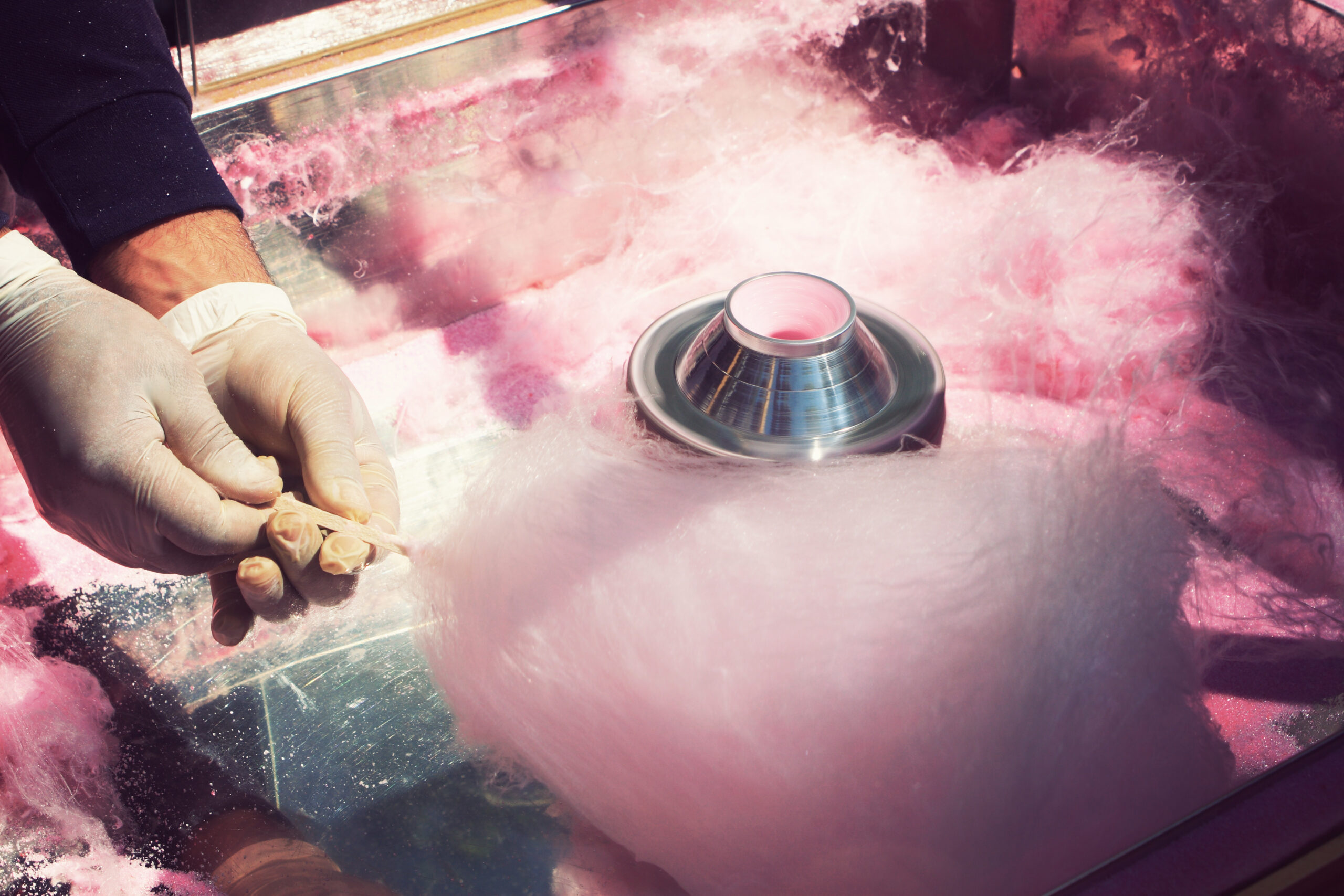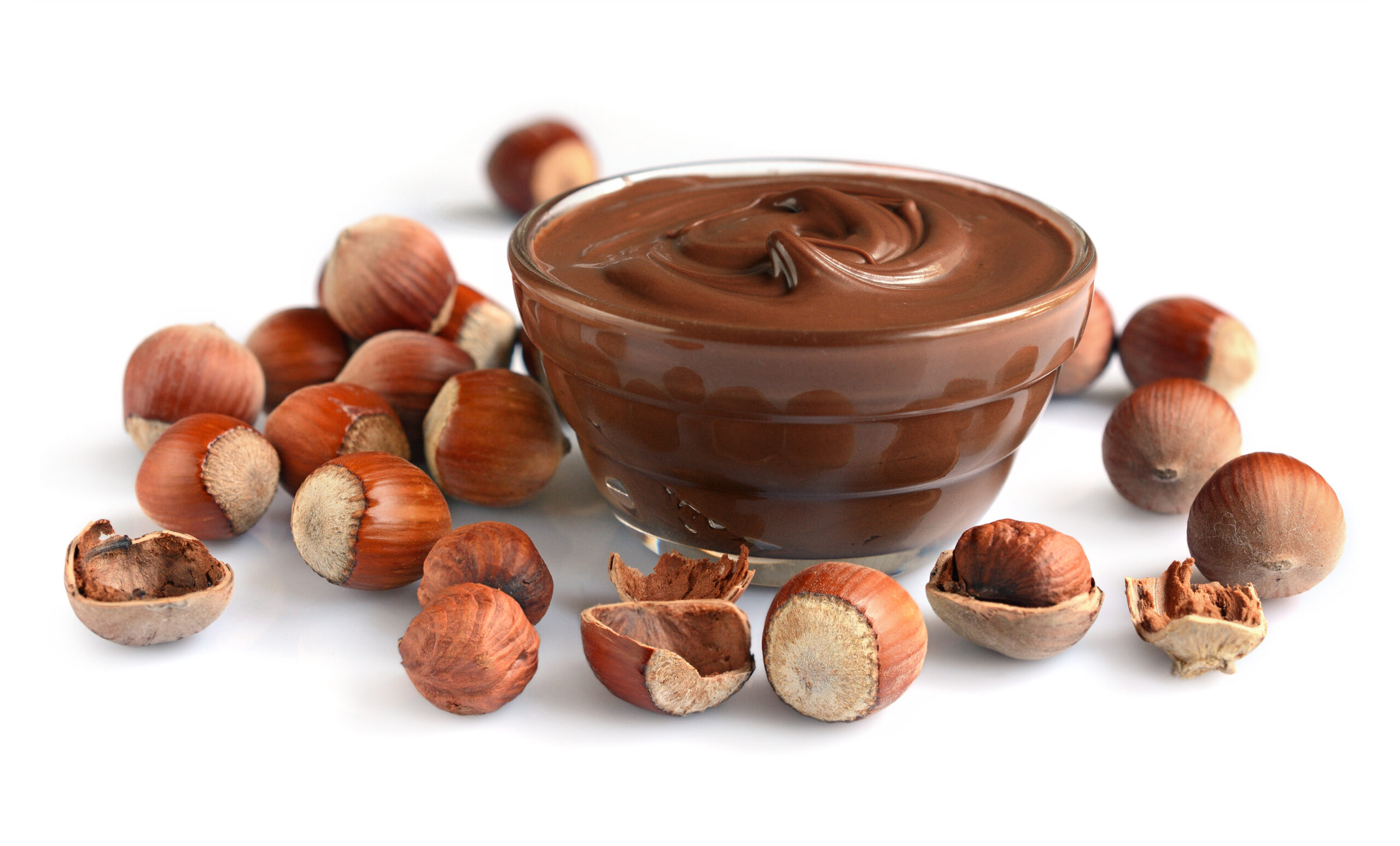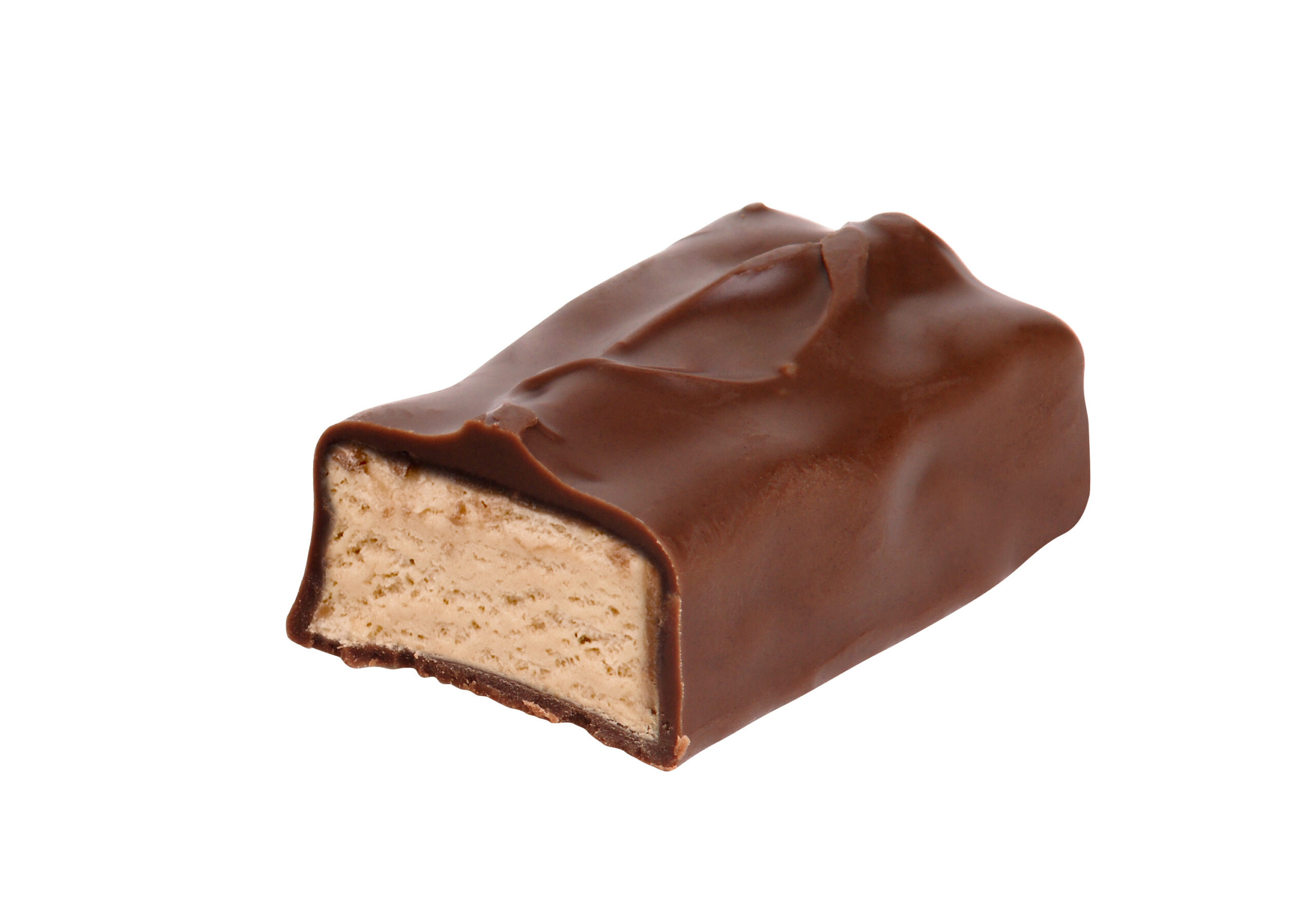When you think about it, our food system is fascinating. We scarf down snacks every day without questioning where they came from. The following food facts will surely throw you for a loop.
Ketchup Was Thought to Have Healing Powers

In 1834, John Cooke Bennet added tomatoes to ketchup. Surprise! Ketchup wasn’t always made with tomatoes. It used to be a concoction of mushrooms or fish.
Adding tomatoes to the mix gave the secret sauce a hearty mix of vitamins and antioxidants. Bennet claimed it could cure everything from diarrhea to jaundice.
He even had a pill salesman who transformed his ketchup recipe into pills! But in 1850, people realized the sauce wasn’t as medicinal as they originally believed.
Ranch and Creamer Can Contain Titanium

Titanium dioxide, for those of you who don’t know, is found in plastic, paint, and sunscreen. It’s also commonly used in ranch dressing, coffee creamer, and icing.
Titanium is often used to make white items appear whiter. That’s why it is also on the ingredient list for laundry detergent, paint, and sunscreen.
Although the FDA considers titanium dioxide “safe,” new research links the additive to inflammatory bowel diseases. We always knew ranch was a little bit gross.
You Can Turn Peanut Butter into Diamonds

According to Popular Mechanics, a bit of pressure and a lot of heat can convert a simple scoop of Skippy into condensed carbon, otherwise known as diamonds.
Dan Frost, a scientist in Germany, contrived a plan to replicate the crystalline structures believed to layer the Earth’s lower mantle. With peanut butter, of course.
During his experiment, Frost discovered that when exposed to immense pressure, the carbon dioxide in the peanut butter creates artificial diamonds. Finally, a peanut butter wedding ring.
Gummy Wax is the Same as Car Wax

Who didn’t love fruit snacks in elementary? In fact, who doesn’t still enjoy a few, even in adulthood? The multi-colored treats have very intense ingredient lists, though.
The average fruit gummy contains corn syrup, sugar, modified corn starch, and a list of other kinds of normal ingredients. It also often contains carnauba wax.
This is the same wax that is used to give cars, shoes, surfboards, and dental floss (among other things) their glossy sheen. Luckily, carnauba wax is natural.
Popsicles Were a Happy Accident

According to NPR, the first popsicle was an accident. An 11-year-old boy named Frank Epperson left a mix of water and soda in a cup outside overnight.
Delighted to find that his soda had frozen by morning, he ate it without qualms. Epperson called his invention the “Epsicle” and started selling it that summer.
It didn’t get its current name until years later. When Epperson grew up to have his own children, they called his treat a “Pop’s Sicle” or “Popsicle.”
Farm-Raised Salmon Isn’t Really Pink

It’s dyed. While wild salmon is naturally pink, farm-raised salmon is a different story. You can buy wild salmon from the supermarket, but most are farm-raised.
In order to give farm-raised fish that appealing pink hue (and make them more marketable), salmon farmers add carotenoids (plant pigments) to the fish’s food.
The color distortion occurs because farm-raised salmon are naturally gray. And most, if not all, shoppers look for a pinky hue when buying salmon.
Red Food Dye is Beetles

And now Skittles are ruined forever. Out of all the food facts, this is one of the worst. We don’t know how we can eat Skittles again.
Carmine (commonly referred to as carminic acid) is a red food dye that’s used in maraschino cherries, Skittles, raspberry, strawberry-flavored snack foods, and, in some cases, lipstick.
The worst part? Carminic acid is made from the crushed corpse of a beetle — the Dactylopius coccus. We’ll just pick out the red ones.
Flamin’ Hot Cheetos Were Invented by a Janitor.

That’s right, and that janitor later became an executive VP at PepsiCo. In 1976, Richard Montanez pitched his idea for Flamin’ Hot Cheetos to Frito-Lay’s CEO.
At the time, Montanez worked as a janitor at the Frito-Lay plant in Rancho Cucamonga, CS. He got the idea while eating a Mexican favorite, elote.
Montanez’s wife then helped him come up with the perfect seasoning. Montanez presented his idea to the board of his snack plant just two weeks later.
Cilantro and Coriander Come from the Same Plant

That’s right. You can thank the plant called Coriandrum sativum for many of your perfectly seasoned foods. Even so, coriander and cilantro are quite different.
You’ve probably heard that some people vehemently hate cilantro. Apparently, though, there is a biological reason they can’t stand the herb and think it tastes like soap.
According to a genetic survey conducted at Cornell University, some people have a specific gene (the OR6A2 gene) that causes them to detest the taste of cilantro.
McDonald’s Chicken McNuggets Come in Four Shapes

According to McDonald’s Canada, McNuggets aren’t just random shapes. They come in four distinct shapes to ensure consistent cooking times. The company wrote on its website:
“The four shapes we make Chicken McNuggets in was the perfect equilibrium of dip-ability and fun… Three would’ve been too few. Five would’ve been, like, wacky.
For now, our McNugget shapes are the ‘ball,’ the ‘boot,’ the ‘bow tie,’ and the ‘bell.’ We also make them similar in size to ensure consistent cooking times…”
Bananas Are Berries

And infuriatingly enough, strawberries are not. You probably know that avocados and tomatoes are, surprisingly, fruits. But did you know that bananas are actually berries?
This is because “true” berries, according to Stanford Magazine, are fruits that stem from one flower with one ovary and several seeds. This is true of bananas.
Therefore, tomatoes, kiwis, pomegranates, and bananas fall into the category of berries, which seems wrong. We’re still probably going to call most of them fruit (besides tomatoes).
Honey Never Expires

If properly stored, honey can actually last forever. That bottle of honey in your pantry will probably outlive your grandchildren’s children (and their kids, too).
Thanks to the sticky sweet substance’s acidity, lack of water, and the apparent presence of hydrogen peroxide, this treat could last forever if you let it.
In 2015, a group of archaeologists found 3,000-year-old honey while exploring tombs in Egypt. And you know what? It was perfectly edible! We would still probably pass.
Jam is Made With Fruit While Jelly is Made With Juice

Have you ever wondered why jam is so chunky? That’s because jam is made of actual pieces of fruit, whereas jelly is made with fruit juice.
The fruit is crushed and strained, while the extract is boiled with sugar and pectin. Since jelly isn’t as naturally thick as jam, it requires more pectin.
This is why we have peanut butter and jelly sandwiches; jelly is much more spreadable. But we wouldn’t turn our noses up at peanut butter and jam.
Pound Cake Contains a Pound of Everything

The original recipe for pound cake dates back to the 1700s. An authentic pound cake calls for one pound each of sugar, flour, butter, and eggs.
If you’re from the South, this recipe might not come as too much of a surprise. Didn’t everyone’s grandma have their own special take on pound cake?
Interestingly enough, though, pound cake’s original recipe isn’t actually from the Southern states of America. It’s a British confection that dates back to the 1700s.
Artificial Vanilla Flavor Has Unsavory Origins

The vanilla-ish goo is called castoreum. According to National Geographic, the vanilla flavoring that’s used in your baked goods could come from the anal excretions of beavers.
Beaver butts secrete a good-smelling and gooey substance called castoreum, which is how the animal marks its territory. The FDA lists castoreum as “generally safe.”
Luckily, this less-than-appetizing ingredient has fallen out of common use. It’s actually incredibly rare and hard to produce, so it’s unlikely any of your favorite snacks contain it.
Cauliflower Comes in Multiple Colors

Most of us consider cauliflower to be broccoli’s white cousin. But it turns out that there’s more to the story of cauliflower than meets the eye.
Cauliflower actually comes in multiple shades, rather than just white. You can find purple, green, and even orange cauliflower, although these varieties are harder to find.
These colored varieties of cauliflower offer not only visual appeal but also unique nutritional benefits. So next time you’re cooking up a cauliflower recipe, consider purple!
Decaf Coffee Still Contains Caffeine

If you’re sensitive to caffeine, decaf coffee might, unfortunately, not offer a surefire solution for your coffee cravings. Despite its name, decaf coffee still contains some caffeine.
Still, decaf is a safer bet than regular coffee, as it contains much less caffeine. On average, an 8-ounce cup contains about 3.5 milligrams of caffeine.
For comparison, the same serving size of regular coffee typically contains about 70 to 140 milligrams of caffeine, depending on how it’s prepared. (Cold brew, anyone?)
Fruit Salad Grows on Trees in Australia

If you’re prepping a home-grown fruit salad in Australia, you might not have to harvest multiple fruit plants. There’s actually a tree that produces multiple types of fruit.
How is this possible? Through the power of science, of course! By grafting branches from different trees together, a single tree can produce a variety of fruits.
You can easily find these trees in Australia, where a company aptly named “Fruit Salad Trees,” sells these marvels of modern botany. Thank you, fruit Frankensteins!
The First Meal Eaten in Space Was Pretty Gross

If you knew you were going to go down on the record as the first person to eat a meal in space, what would you choose?
Would it be meat paste? Unfortunately for the first human to journey into the great void, Yuri Gagarin, your cuisine options in zero gravity are pretty limited.
Gregarin ate the first meal in space on April 12, 1961, aboard the spacecraft Vostok 1. His inaugural meal consisted of pureed meat in an aluminum tube.
Tea Bags Were a Misunderstanding

The story goes that in 1908, a tea merchant from New York sent samples of tea leaves to his customers. He packaged them in small silk bags.
Some of his sample recipients misunderstood the packaging choice and put the entire silk bag into their teapots. They were amazed by the clever ingenuity!
The tea merchant, Thomas Sullivan, realized the potential of this innovative tea technology right away. He started selling tea in tea bags, initially made of silk.
German Chocolate Cake Isn’t German

We certainly wouldn’t blame you for thinking that German chocolate cake comes from, well, Germany. I mean, hello, it’s right there in the name, isn’t it?
But shockingly, this isn’t the case. The dense chocolate dessert actually originated in the United States in 1857. So why on Earth is it called “German” chocolate cake?
The English-American chocolate maker who created a new type of dark baking chocolate in 1852 was named Samuel German. The cake recipe was named in his honor.
A Dentist Invented Cotton Candy

Why would a dentist create something that’s sure to give you cavities? Well originally, this sweet confection was named “fairy floss,” which at least sounds more dentist-y.
A dentist named William Morrison and a confectioner named John C. Wharton teamed up to create a unique machine. It spun sugar into edible strands, like floss.
They brought their invention to the public at the World’s Fair in St. Louis in 1904, where it was an immediate hit. Talk about a conflict of interest.
The Holes in Crackers Aren’t Decorative

Have you ever wondered why there are holes in your saltine crackers? It turns out, those little holes aren’t purely decorative. They serve an important purpose.
The holes are called “docking” holes, and they’re made with a “docker.” These holes prevent air bubbles from forming in the cracker while it’s baking.
Docking a cracker also helps control the rising of the dough, making sure the cracker stays flat and crisp. It wouldn’t really be a cracker without that!
Processed Cheese Was Created by Swiss Scientists

We typically think of the thin, soft, and plasticy slices of yellow cheese as an American invention. But it was actually created in a Swiss lab.
Swiss scientists Walter Gerber and Fritz Stettler developed a method for processed cheese in 1911. This new cheese was emulsified to prevent it from separating upon melting.
Processed cheese was further developed and popularized in the United States, though. James L. Kraft (yes, the Kraft), made American cheese what it is today.
Nutella Uses One in Four Hazelnuts

Well, that’s not completely true. What is true is that Nutella’s manufacturer, the Italian company Ferrero, uses roughly 25% of the global supply of hazelnuts.
Nutella is a 60-year-old chocolate hazelnut masterpiece loved the world over. But it sure does use a lot of hazelnuts, which isn’t very sustainable in the long-term.
In 2017, Nutella’s recipe actually changed to reflect the decreasing supply of hazelnuts to meet demand. The spread now contains more sugar and skimmed milk powder.
Dynamite Originally Contained Peanut Oil

If you blew up a mine with dynamite, would you smell peanut butter? Probably not. But back in the day, there was often peanut oil inside those explosives.
The main explosive component of dynamite is nitroglycerin. To get nitroglycerin, you need glycerol, which can be derived from both animal and vegetable oils, including peanut oil.
So when there were shortages in other types of oil, dynamite manufacturers would turn to the humble peanut for their glycerol. Anyone else suddenly want Pad Thai?
The Expiration Dates On Bottled Water Actually Matters

Of course, water doesn’t go bad. So why are there expiration dates on our bottles of Figi? (And other brands of bottled water, for that matter.)
The main reason is that over time, the plastic bottles containing the water actually start to degrade. This can release potentially harmful chemicals into the water.
Another reason is actually that some countries and regions require expiration dates on all consumable products. It’s basically just to help supermarkets manage their inventory.
Three Musketeers Used to Have Three Flavors

Have you ever wondered how Three Musketeers bars got their name? It turns out that the name was once inspired by the bar’s three flavors.
In 1932, when the Musketeers was created, you would get three separate pieces in each package. Each one had a different flavor: strawberry, chocolate, or vanilla.
During World War II, though, shortages and restrictions made it difficult to keep producing all three flavors. Mars, Inc. chose to keep the chocolate variety.
In Ancient Egypt, You Might Have Gotten Paid in Radishes

How would you like to pick up your paycheck, but instead of a check, it’s a sachel of radishes? For workers in ancient Egypt, that was the norm.
Well, there’s no evidence that any workers were paid in radishes alone. But we do know that they were often paid in grain, bread, meat, and vegetables.
Radishes would have been a nutritious part of a sustenance package that helped sustain the worker and their family. Still, it’s fun to think about.
Did These Food Facts Blow Your Mind?

From the weird to the unexpected to the just plain gross, these food facts have been interesting, to say the least. And sometimes, downright disturbing.
Will we have the willpower to forever forego delicious red Skittles? Maybe, maybe not. But now we’ll go forward with the knowledge that they’re made from bugs.
Which bizarre fact surprised you the most? What will you be changing about your diet now that you know? And most importantly, will you call bananas berries?

